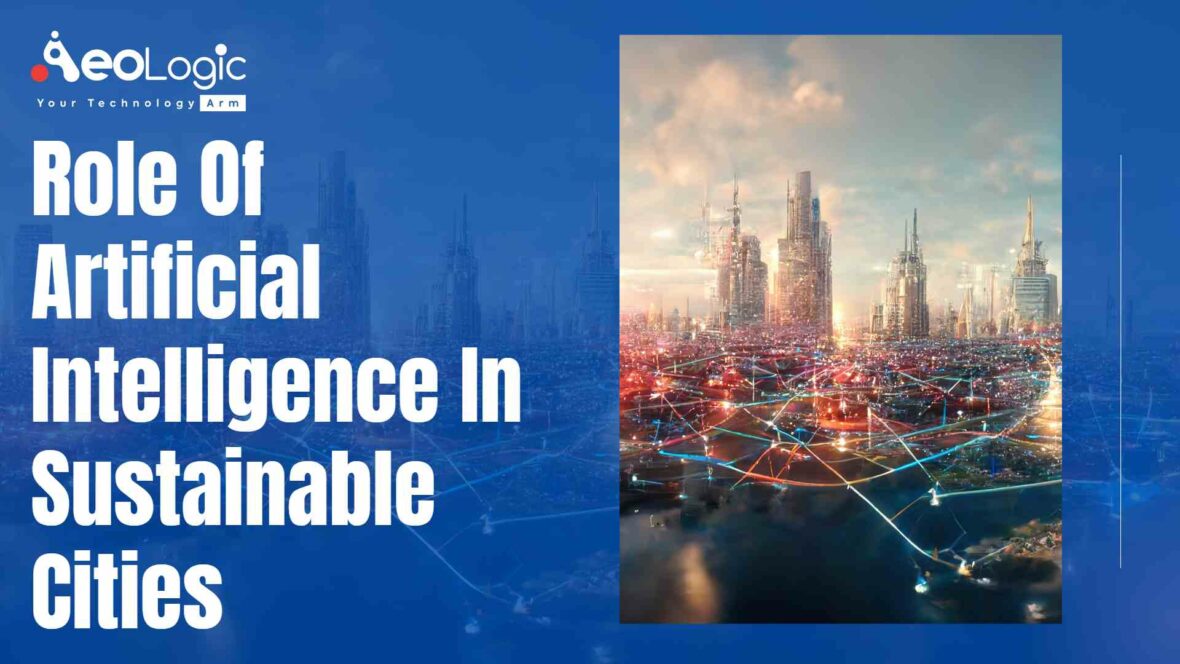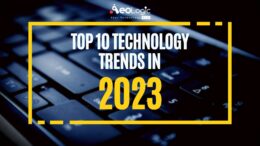According to international organization reports, internationally more than fifty percent population is living in urban areas, and by 2050, more than two-thirds of the population will be living in cities providing big investment opportunities for tech development companies. The role of AI in sustainable cities is going to play a big role in making urbanization smarter, aiming to accomplish sustainable growth by making the cities prepared with advanced features to live, shop, walk, and enjoy a safe and more convenient life in such environments.
While developing cities to create them smart, various challenges like sanitation, administration, traffic congestion, security surveillance, parking management, and many more are overcome by the role of AI in sustainable cities as it can help to offer a sustainable solution to habitants.
Also read: Role of RFID Technology in Smart City
ROLE OF AI IN SUSTAINABLE CITIES
The role of AI in sustainable cities can be life-changing if implemented in the right spaces. There are multiple zones in cities where AI can be applied to improve the performance and efficiency of a system.
Advance Security Camera & Surveillance System
AI-enabled sensors and cameras can keep an eye on the surroundings for improving the security level in the city’s neighborhoods. Such cameras are able to recognize people, and their faces or can even track unusual activities done by them in restricted areas. A High-resolution AI security camera system helps in tracking the movement of all registered vehicles. It can also monitor the cleanliness of the public spaces and crowd density round-the-clock. All thanks to the historical data available from different units of the city, police can recognize the category and calculate the intensity of crimes by monitoring all such activities in a particular zone.
Autonomous Flying Objects for Ariel View Monitoring
The role of AI in sustainable cities also includes the use of AI-enabled drones or autonomous flying. Furthermore, similar objects can be used to monitor the inner city and houses or other concerning zones. The in-built cameras in drones facilitate to provide the real-time visuals of certain different locations, where humans cannot reach easily or quickly. Therefore, helping administration and security departments to take action in time.
Autonomous flying drones can help in tracking humans, monitoring traffic movements, and providing 2D aerial view imagery mapping for better urbanization of cities. Also, it can be used for advanced security and surveillance for crime squads and security departments.
Face Detection Cameras and Movement for Public Safety
The role of AI in sustainable cities also helps in face recognition technology. It is capable of recognizing different people by their faces and disclosing their personal identities. AI in security cameras or drones can detect human faces and match them with the database record for tracing their identity. As well as authenticating the person entering in cities, societies, and other restricted areas.
Another technique is Landmarking annotation. It is implemented to train the AI-based model in the face recognition system. To create sustainable and smart cities, such a high level of face detection technology is significant to make the surroundings safer and more private.
Smart Waste Management and Disposal System
People living in cities are producing a huge amount of waste which is another challenge for urban waste management. Therefore, finding the right way of managing the generated garbage and keeping the environment clean and hygienic in society, is a challenge for lots of countries. The role of AI in sustainable cities is to use AI-enabled cameras. This can help in detecting trash thrown on the street and recognize the types of garbage for categorization.
Moreover, mounting AI-enabled sensors on waste bins can make the waste collection more well-organized. Authorities can also get notifications when the bins are about to be filled and make sure that decreasing operational costs by eliminating unnecessary pickups and providing dynamic collection routes, and scheduling for optimization of efficient waste management.
Better Governance and Planning Management
Another role of AI in sustainable cities is to make better governance and planning management. While developing urban townships or cities, AI or machine learning techniques can be implemented for mapping land use across time. In order to generate crucial in-depth insights using satellite imagery and aerial view 2D or 3D images of geographical zones.

The algorithms trained through machine learning can help in analyzing satellite images for city planning and development with enormous scope for adjusting the formation based on changing data, and areas prone to calamities like earthquakes, flooding, and storms. Such real-time data as well as historical data can constantly be monitored to allow better governance.
Also read: How Does Technology Help Sustainability
Summing Up…
The role of AI in sustainable cities and urban development can play a crucial role in urban planning and management. With the advanced security system, traffic monitoring, and disposal management. In order to make societies more secure and livable with availability and control of their home and other activities making their living experience more comfortable and enjoyable.
Schedule a free 60-minute call with us to know more about our services. Get in touch with us now!
FAQs
How can AI facilitate environmental sustainability?
AI can play a huge role in tackling environmental challenges. From designing more energy-efficient buildings to monitoring deforestation to optimizing efficient energy deployment.
What is the function of artificial intelligence in smart cities?
Artificial intelligence can be applied in smart cities for analyzing and tracking how businesses and residents use energy. Which is generating data that in turn helps with decisions on where renewable sources of energy should be implemented. This can also present city planners with where energy is being wasted and how it can be protected.






